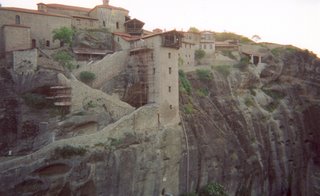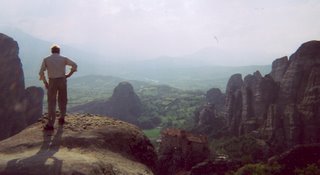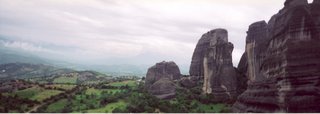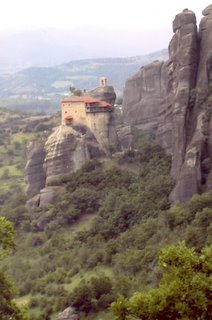 Nafplio, Peloponnese, Greece
Nafplio, Peloponnese, GreeceUpdate August 2007 - with the fires in the news, but I think mostly inland.
Nafplion is on the Peloponnese Peninsula, coast, southeast of Athens and the mainland. This is a beautiful resort destination. Imagine great romance. Not difficult in this setting. It was occupied by the Venetians, look up the place names associated with the old Venetian empire at //romeartlover.tripod.com/Salmglos., then to the History of Venice, then down to Napili di Romania, Port of Morea on the Gulf of Argos (Argos was the ancient town there), and see that its current name is Nafplion.
Click on the links there for the port and the fortress --there is a 15th century fort at the top of the hill. See //romeartlover.tripod.com/Argo; and //romeartlover.tripod.com/Nauplia.
The modern town: elegant Greek-Venetian architecture. Splendid for a cruise stop. See www.greecetravel.com/nafplio/ For other history and photos, see www.delboy85.tripod.com/ppenese/id6.
On the way: artichoke fields. In bloom. Read the historian Herodotus on the ancient world 450BC. or so, for an idea of the vibrancy and movement among peoples. Artichokes at that time in Mauritania, says Strabo - huge. //www.fordham.edu/Halsall/ancient/anc-nafrica.
 Meteora, Monastery, Greece
Meteora, Monastery, Greece Meteora view, Monasteries, Greece
Meteora view, Monasteries, Greece Meteora, Creece. Conglomerate rock formations, and medieval monasteries
Meteora, Creece. Conglomerate rock formations, and medieval monasteries  Rock formations, monastery at summit, Meteora, Greece
Rock formations, monastery at summit, Meteora, Greece Clifftop monastery, Meteora, Greece
Clifftop monastery, Meteora, Greece Olympus, view. Greece
Olympus, view. Greece